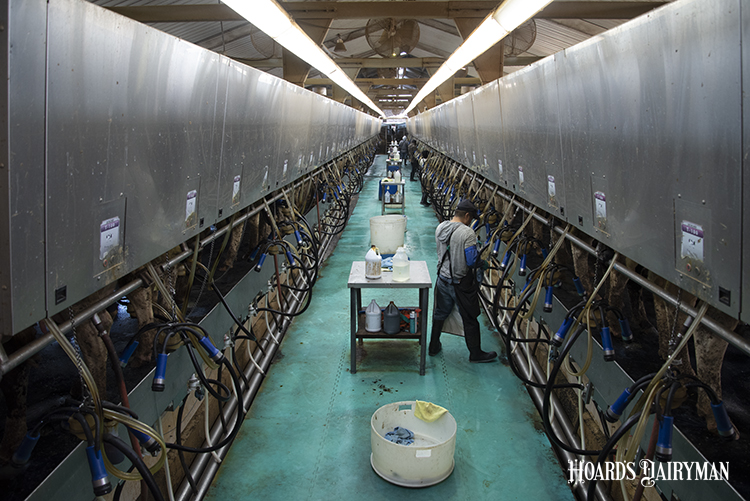
Just 10 years ago, a good goal for milkfat production in a Holstein herd was 3.75%. Between 2000 and 2012, the average butterfat test in the Midwest was 3.7% to 3.8%.
Times have changed, and in 2021, average milkfat levels topped 4% for the first time. According to University of Minnesota assistant professor Isaac Salfer, the trend continued into 2022, with bulk tank fat tests in January of this year averaging 4.25%.
“I fully expect that in a few years, I will be teaching my class that a 4% milkfat test is on the low end of what a herd should expect,” Salfer wrote in a University of Minnesota Extension article.
He indicated that there are four main factors related to this jump in milkfat production:
1. Improved ration formulation that emphasizes rumen-protected fatty acid products and fatty acid digestibility.
2. Improved forage quality and fiber digestibility, which allows higher fiber diets to be fed without sacrificing available energy for milk production.
3. Improved feed and bunk management that maximizes each cow’s time at the bunk.
4. Improved genetic selection for milkfat, mainly due to the use of the Net Merit $ selection index that puts an emphasis on milkfat and protein.
Salfer explained that milkfat comes from two sources. Preformed fat comes from the fat present in the diet and body reserves. De novo, or “new” fat, results from synthesis in the udder. Milk can be tested in a laboratory to determine what percent of milkfat comes from each source.
If milk contains low concentrations of preformed fat, less than 30% of the total fatty acids, Salfer noted that the farm could benefit from feeding supplemental fat, especially saturated sources like palm oil, rumen-protected fat supplements, or tallow. Unfortunately, these sources are very expensive at the current time, so the decision to feed them must be made in consideration of income over feed costs.
The de novo fatty acids should be 23% of the fatty acids, Salfer shared. The amount of de novo fat is strongly influenced by rumen fermentation and is a less expensive way to modify milkfat.
One specific fatty acid produced by rumen microbes can lead to the direct inhibition of milkfat synthesis in the udder, Salfer wrote. High diet fermentability, high unsaturated fatty acids, poor bunk management, and poor feed consistency are all factors for the production of this fatty acid that can reduce milkfat.
“Feeding management strategies that increase the number of visits a cow makes to the feedbunk can have major benefits on de novo fat synthesis,” Salfer noted. Several strategies have been proven to elevate milkfat production, including feeding more frequently (two or more times per day), pushing up feed seven to 12 times per day, reducing stocking density below 110%, providing at least 24 inches of bunk space per cow, and feeding at a consistent time each day.








